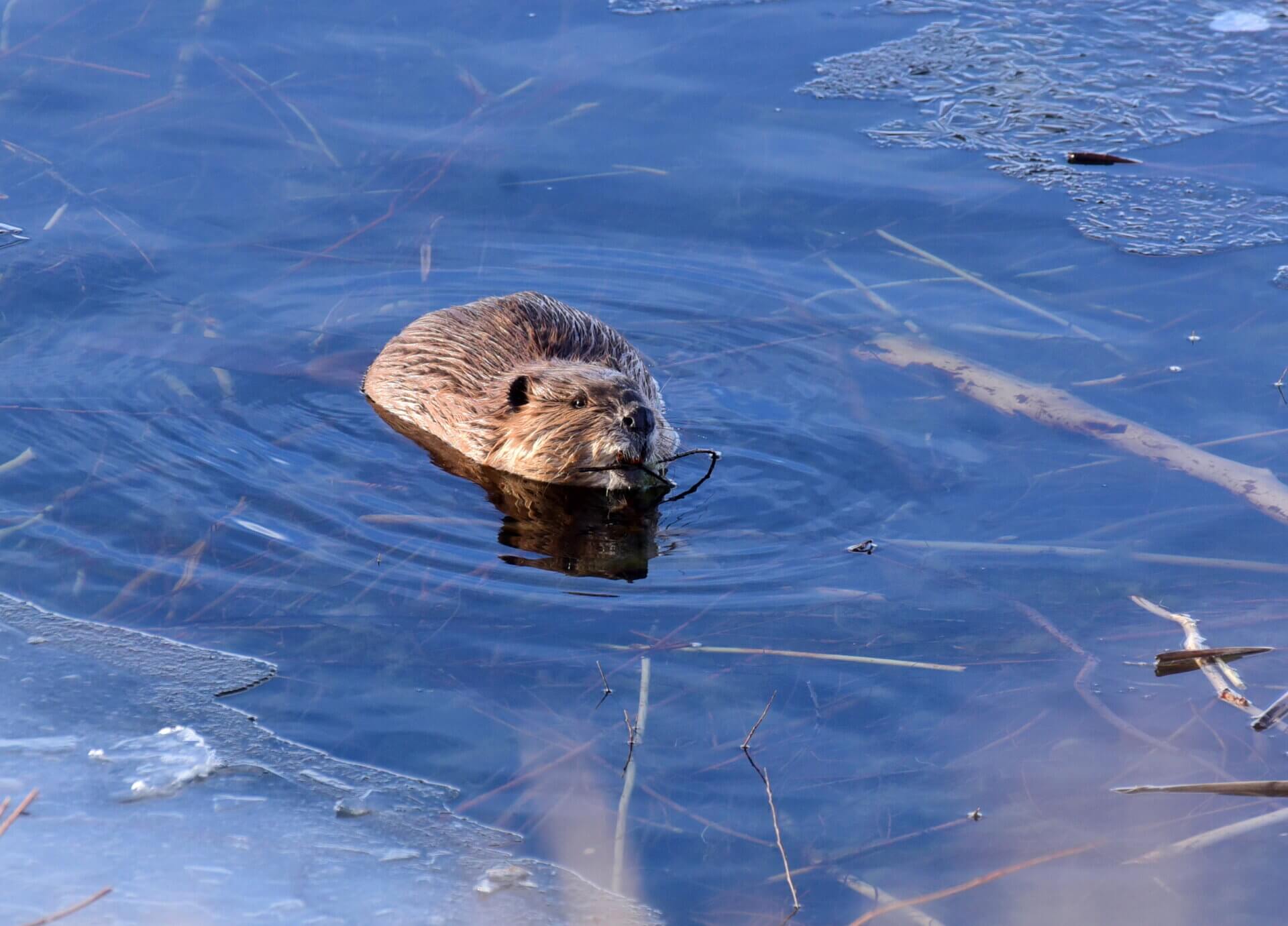
Leave It to Beavers
In Northwest Wyoming, wet meadows are unique rangeland habitats that act like sponges to capture, store, and slowly release water. When uplands heat up and dry out in late summer, wet meadows stay green and moist, providing more forage for wildlife and livestock longer into the year. Wet meadows typically experience “sheet flow”, where water moves in a uniform layer across the ground and evenly saturates it, but common issues like gully erosion diminish wet meadows in a cycle that can be challenging to break. Landowners and ranch managers can support or restore healthy wet meadows by embracing beavers or mimicking some of their impacts on the landscape.
Beavers use trees and shrubs to construct dams in low-gradient, running water systems, creating beaver ponds. These ponds not only provide beavers with escape habitat and access to food in winter, but they also stabilize hydrologic systems. Dams and ponds moderate high flows, reduce erosion, maintain flows in summer, store water during flooding, and release water during droughts. Ponds create additional fish pools that also retain sediment, reducing turbidity and improving fish habitat. Increased water retention from ponds also supports wetland bird habitat, as well as increased vegetation and forage for wildlife and livestock.
Beavers can also cause serious damage from flooding roads and hay meadows, blocked culverts, and damaged trees. If you are experiencing damage from beavers but want to coexist with them and reap their habitat benefits, there are several inexpensive solutions available. These include fencing to prevent tree felling, perforated pipes in dams to prevent flooding, and culvert fences known as beaver deceivers.
The Bar Cross Ranch in Cora has made strides in balancing ranching practices with restoring wet meadows and natural floodplains by using Zeedyk rock structures and beaver dam analogs (BDAs). Ranch staff and volunteers installed Zeedyk structures in an eroded drainage on the ranch that once hosted a verdant wet meadow promoted by natural snowmelt and an up-drainage spring. They installed 30 Zeedyk structures along the channel to armor the ground surface and slow down running water so it could spread into the surrounding soil and drop sediment instead of carrying it away. By the next spring snowmelt, the structures worked beautifully, creating pools for migrating wildlife to drink, and by the summer, bright green grass was growing in the structures.
On the southeast portion of the ranch, a stream channel was becoming increasingly incised causing loss of grass, poor willow production, and disconnection of the floodplain. The Bar Cross team installed 100 beaver dam analogs by planting wooden fence posts in the ground across the width of the creek and weaving willow branches in between the posts to mimic the effects of beaver dams. The results have been spectacular: The BDAs have forced fast-moving water to drop sediment, raising the creek bed, reconnecting the meadow’s floodplain, and producing dense swaths of grass. Over time, the creek bed will continue to rise and become even with the surrounding meadow, more uniformly saturating the ground and allowing the entire drainage to function as a wet meadow.
For resources on beaver and wetland management, check out our regional resource hubs:
Jackson Hole Resource Hub
Green River Valley Resource Hub
Wind River Resource Hub
Our Park County Resource Hub is currently under construction but check back soon for regional resources.
Photo: Tom Koerner/U.S. Fish and Wildlife Service